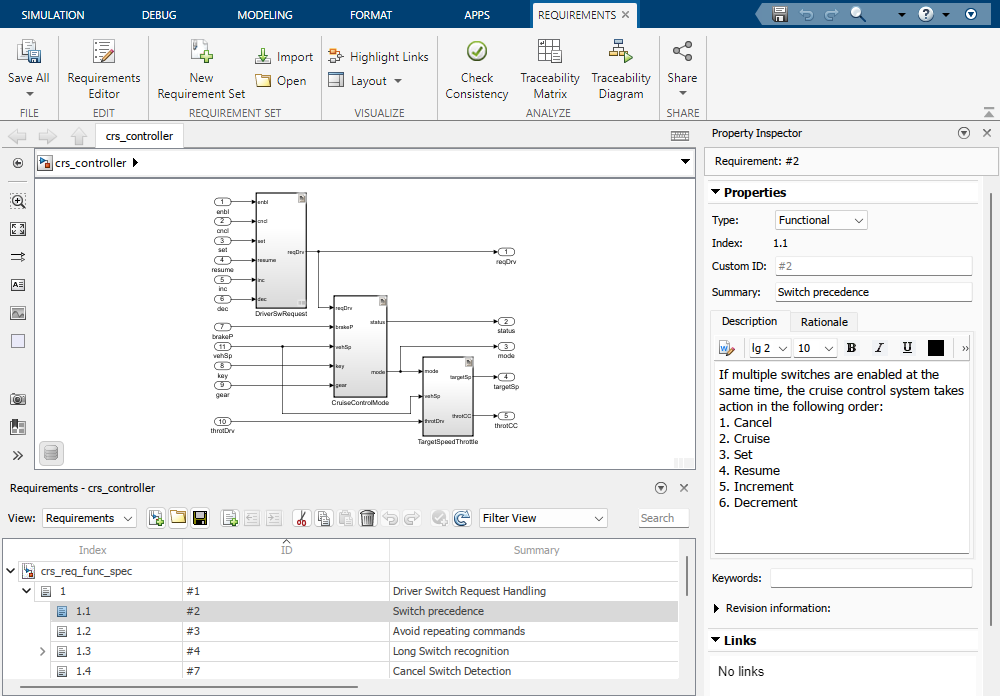需求管理器
管理模型中的需求和链接
说明
您可以使用需求管理器查看当前模型的需求视角。默认情况下,需求透视图在工具条、属性检查器和需求浏览器中显示 选项卡。
您可以使用需求视角来:
查看和创建需求集。
创建、编辑和删除需求。
查看并创建从模型到需求的链接。
管理模型链接的链接存储设置。
打开需求管理器也会打开需求浏览器窗格。您可以使用需求浏览器来查看需求或链接。使用视图下拉菜单选择需求浏览器是否显示需求或链接。

要在需求浏览器中的需求选项卡中显示管理需求的任务,请将视图设置为需求。需求选项卡显示需求集部分,需求浏览器显示需求。

要在选项卡中显示管理链接的任务,请将视图设置为链接。 选项卡显示链接部分,需求浏览器显示来自模型的传出链接。需求浏览器不显示从其他工件到需求集中的需求的链接。

打开 需求管理器 App
Simulink® 工具条:在 App 选项卡上的模型验证、确认和测试下,点击需求管理器。
Simulink 编辑器:在 Simulink 模型画布的右下角,点击“显示透视图”视图图标
 并选择 。
并选择 。MATLAB® 命令提示符:输入
slreq.openRequirementsManager。
版本历史记录
在 R2019b 中推出




